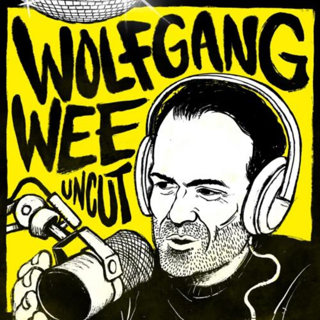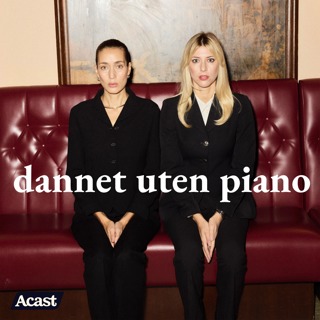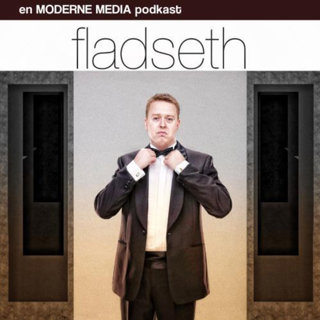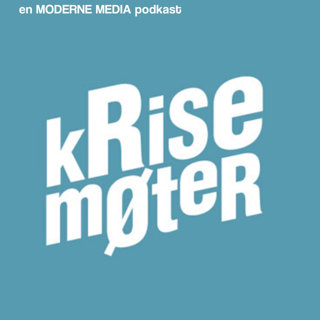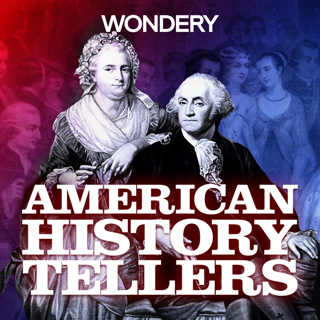
Encore: Supreme Court Landmarks | A Recount in Florida | 6
The morning of Nov. 8, 2000, Americans woke up to an undecided election. Pollsters had predicted a close race between Vice President Al Gore and Texas Governor George W. Bush, but no one knew just how narrow the margins would be. It all hinged on Florida, where 25 electoral votes were up for grabs.Over the next 36 days, armies of lawyers waged a bitter fight to determine how to count the votes in Florida. It was a battle that would eventually find its way to the Supreme Court.In its long history, the Court had been asked to weigh in on political matters, but never before had it intervened in the results of a presidential election. The case that became known as Bush v. Gore would ultimately send one man to the White House and expose the Court to intense public scrutiny.Listen ad free with Wondery+. Join Wondery+ for exclusives, binges, early access, and ad free listening. Available in the Wondery App. https://wondery.app.link/historytellersSupport us by supporting our sponsors!See Privacy Policy at https://art19.com/privacy and California Privacy Notice at https://art19.com/privacy#do-not-sell-my-info.
23 Aug 202342min

Encore: Supreme Court Landmarks | The Warren Court | 5
Before the 1950s, the Supreme Court was best known as an institution that adhered to the status quo. It often sought to protect the rights of property owners and businessmen, shying away from cases that took direct aim at controversial social or political issues.But when a popular former California governor became Chief Justice in 1953, all that changed. Earl Warren’s court would take on some of the hottest issues of the times, ruling on cases where individual rights would take precedent, such as Brown v. Board of Education and Baker v. Carr, and where First Amendment and Fifth Amendment rights would be strengthened, such as Engle v. Vitale and Miranda v. Arizona.For sixteen years, the Warren Court would radically reshape the legal and social landscape of America.Listen ad free with Wondery+. Join Wondery+ for exclusives, binges, early access, and ad free listening. Available in the Wondery App. https://wondery.app.link/historytellersSupport us by supporting our sponsors!See Privacy Policy at https://art19.com/privacy and California Privacy Notice at https://art19.com/privacy#do-not-sell-my-info.
16 Aug 202340min

Encore: Supreme Court Landmarks | Loaded Weapon | 4
Through most of 1941, as fighting raged across Europe, the United States held back from entering the war. That all changed in December, when Japanese fighter planes bombed Pearl Harbor and the nation found itself mobilizing for World War II. Suddenly, the frenzy to fight enemies abroad turned to suspicion against those at home.President Roosevelt signed Executive Order 9066, giving the military the power to detain and permanently jail over 110,000 Japanese Americans living on the West Coast. But three young detainees would defy their fate.Fred Korematsu, Gordon Hirabayshi and Mitsuye Endo would challenge the U.S. policy of Japanese internment and bring their cases all the way to the Supreme Court — pitting the wartime powers of the United States against the constitutional rights of American citizens.Listen ad free with Wondery+. Join Wondery+ for exclusives, binges, early access, and ad free listening. Available in the Wondery App. https://wondery.app.link/historytellersSupport us by supporting our sponsors!See Privacy Policy at https://art19.com/privacy and California Privacy Notice at https://art19.com/privacy#do-not-sell-my-info.
9 Aug 202340min

Encore: Supreme Court Landmarks | Separate and Unequal | 3
After the Civil War, America began to rebuild a shattered nation. For the first time, the country could create a society without slavery, and a nation where Black people could forge their own path as independent citizens.But by the 1890s, the laws and policies that promised new rights for Black citizens in the South were under assault. In Louisiana, white politicians attempted to turn back the clock on racial progress by passing the Separate Cars Act and reinstating segregation.The move prompted a Black New Orleans activist group called the Comité des Citoyens to rise up and challenge the law. Members Louis Martinet and Albion Tourgee aimed to build a test case – a case that would force the Supreme Court to strike down segregation laws, and disprove the idea that “separate” could ever be “equal.”The high-stakes case would define race relations for decades to come. And it would begin with a brief train car ride in New Orleans, by a 29-year-old shoemaker named Homer Plessy.Listen ad free with Wondery+. Join Wondery+ for exclusives, binges, early access, and ad free listening. Available in the Wondery App. https://wondery.app.link/historytellersSupport us by supporting our sponsors!See Privacy Policy at https://art19.com/privacy and California Privacy Notice at https://art19.com/privacy#do-not-sell-my-info.
2 Aug 202335min

Encore: Supreme Court Landmarks | The Cherokee Cases | 2
In the early 1800s, the United States was growing rapidly, seeking land and resources for its expanding population. But the growth threatened Native American communities throughout the East. In the southern Appalachia region, the Cherokee Nation held millions of acres of prime farmland and forests, managed by a centuries-old tradition and a thriving government. But the state of Georgia, and a relentless President Andrew Jackson, set their sights on seizing the land.When the Georgia statehouse declared political war, Cherokee advocates fought back. Newspaper publisher Elias Boudinot and Cherokee Chief John Ross took their challenge all the way to the Supreme Court, forcing Chief Justice John Marshall to weigh in on two monumental cases, Cherokee Nation v. Georgia and Worcester v. Georgia.At stake was a decision that would test the limits of the high court’s power -- and determine the future and sovereignty of a threatened nation.Listen ad free with Wondery+. Join Wondery+ for exclusives, binges, early access, and ad free listening. Available in the Wondery App. https://wondery.app.link/historytellersSupport us by supporting our sponsors!See Privacy Policy at https://art19.com/privacy and California Privacy Notice at https://art19.com/privacy#do-not-sell-my-info.
26 Jul 202340min

Encore: Supreme Court Landmarks | The Predicament of John Marshall | 1
After the War of Independence, the new American government created the Supreme Court to be the final word on disputes that the states couldn’t settle. But at first, the Court was anything but Supreme.For nearly a decade, Congress and the President held the real power. In practice the Supreme Court was weak, ineffectual and disorganized – a post so unappealing that many men turned down nominations to serve on its bench.All that would change with the appointment of Chief Justice John Marshall and the arrival of a case called Marbury v. Madison — a political drama that would embroil the new President Thomas Jefferson, outgoing president John Adams, the U.S. Congress, and even the Chief Justice himself.Listen ad free with Wondery+. Join Wondery+ for exclusives, binges, early access, and ad free listening. Available in the Wondery App. https://wondery.app.link/historytellersSupport us by supporting our sponsors!See Privacy Policy at https://art19.com/privacy and California Privacy Notice at https://art19.com/privacy#do-not-sell-my-info.
19 Jul 202336min

Reconstruction Era | Counter Narratives | 7
After Federal troops withdrew from the South in 1877, Reconstruction officially came to an end, and the battle to control the narrative began. For the next century, white Southerners espoused the Lost Cause mythology, shifting the blame for the failure of Reconstruction onto Northern interlopers and Black citizens supposedly “unready” for freedom. Today, Lindsay is joined by University of Colorado Professor Ashleigh Lawrence-Sanders to discuss the legacy of Reconstruction, and how Black scholars and communities have worked to counter the Lost Cause narrative, even up to today.Listen ad free with Wondery+. Join Wondery+ for exclusives, binges, early access, and ad free listening. Available in the Wondery App. https://wondery.app.link/historytellersSupport us by supporting our sponsors!See Privacy Policy at https://art19.com/privacy and California Privacy Notice at https://art19.com/privacy#do-not-sell-my-info.
12 Jul 202339min

Reconstruction Era | The Great Betrayal | 6
In 1876, Republican Rutherford B. Hayes and Democrat Samuel Tilden vied for the presidency. But when Election Day was over, no clear winner emerged. Amid reports of voter fraud, intimidation and violence, both parties claimed victory in South Carolina, Louisiana, and Florida, the only three Southern states where Republicans still held the reins of local government.It was the most bitterly disputed election in American history. As the stalemate dragged on, the nation faced a Constitutional crisis. The outcome of the presidency, the fate of Reconstruction, and the futures of millions of Black Southerners hung in the balance.Listen ad free with Wondery+. Join Wondery+ for exclusives, binges, early access, and ad free listening. Available in the Wondery App. https://wondery.app.link/historytellersSupport us by supporting our sponsors!See Privacy Policy at https://art19.com/privacy and California Privacy Notice at https://art19.com/privacy#do-not-sell-my-info.
5 Jul 202344min











